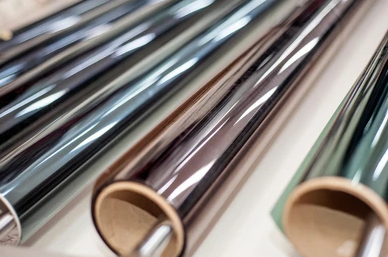|
1. Dyed Window Tinting Film: This type of film uses a layer of dyed polyester film to block heat and UV rays. Dyed window tinting film is one of the most affordable options on the market, but it may not be as effective as other types of film when it comes to heat reduction.
2. Metalized Window Tinting Film: This type of film features a layer of metal particles that reflect heat and UV rays. Metalized window tinting film is more effective than dyed film when it comes to heat reduction, but it may interfere with cell phone and GPS signals. 3. Hybrid Window Tinting Film: This type of film combines elements of both dyed and metalized films to provide a balance of heat reduction and signal retention. Hybrid window tinting film is a popular choice for those who want the benefits of both types of film. 4. Ceramic Window Tinting Film: This type of film uses a layer of ceramic particles to block heat and UV rays. Ceramic window tinting film is the most effective type of film when it comes to heat reduction, and it doesn't interfere with signals. 5. Carbon Window Tinting Film: This type of film uses a layer of carbon particles to block heat and UV rays. Carbon window tinting film is also effective at reducing glare and improving privacy, making it a popular choice for drivers and homeowners alike. When choosing a window tinting film, it's important to consider your specific needs and preferences. Do you want maximum heat reduction or improved privacy? Do you want to maintain your cell phone and GPS signal? By considering these factors and choosing the right type of window tinting film, you can enjoy the many benefits of this popular and effective product. Get in touch or call us today for an expert advice!
0 Comments
Leave a Reply. |
Archives
October 2023
Categories |
FOR REFERRAL CONTACT US: (720) 418 - 8191Monday 6:00 AM - 9:00 PM
Tuesday 6:00 AM - 9:00 PM Wednesday 6:00 AM - 9:00 PM Thursday 6:00 AM - 9:00 PM Friday 6:00 AM - 9:00 PM Saturday 6:00 AM - 9:00 PM |
OUR VIRTUAL OFFICE:Denver, CO, US 80222 |
Colorado Window Tinting is a referral service to pair you with the top contractors in CO, the university, and surrounding areas.
Colorado Window Tinting© 2024


 RSS Feed
RSS Feed